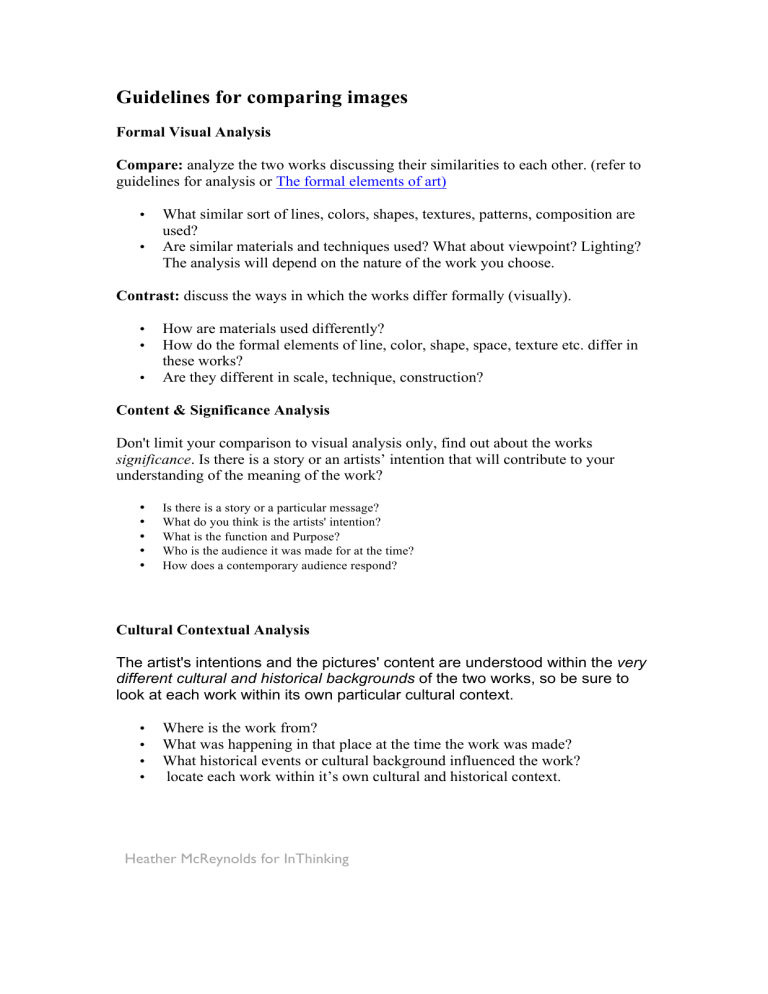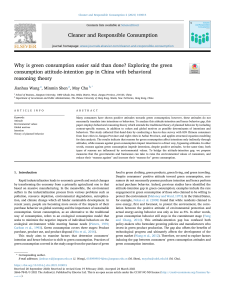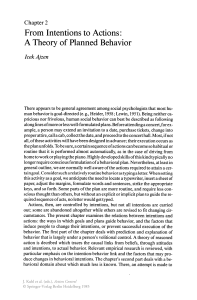
Guidelines for comparing images Formal Visual Analysis Compare: analyze the two works discussing their similarities to each other. (refer to guidelines for analysis or The formal elements of art) • • What similar sort of lines, colors, shapes, textures, patterns, composition are used? Are similar materials and techniques used? What about viewpoint? Lighting? The analysis will depend on the nature of the work you choose. Contrast: discuss the ways in which the works differ formally (visually). • • • How are materials used differently? How do the formal elements of line, color, shape, space, texture etc. differ in these works? Are they different in scale, technique, construction? Content & Significance Analysis Don't limit your comparison to visual analysis only, find out about the works significance. Is there is a story or an artists’ intention that will contribute to your understanding of the meaning of the work? • • • • • Is there is a story or a particular message? What do you think is the artists' intention? What is the function and Purpose? Who is the audience it was made for at the time? How does a contemporary audience respond? Cultural Contextual Analysis The artist's intentions and the pictures' content are understood within the very different cultural and historical backgrounds of the two works, so be sure to look at each work within its own particular cultural context. • • • • Where is the work from? What was happening in that place at the time the work was made? What historical events or cultural background influenced the work? locate each work within it’s own cultural and historical context. Heather McReynolds for InThinking




